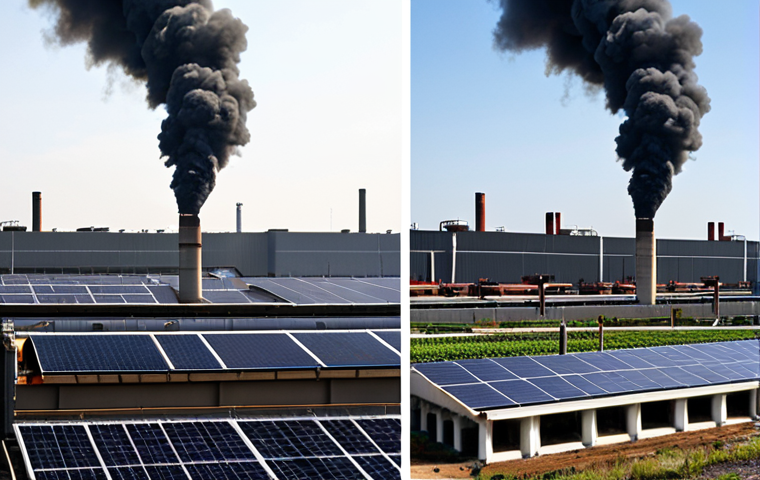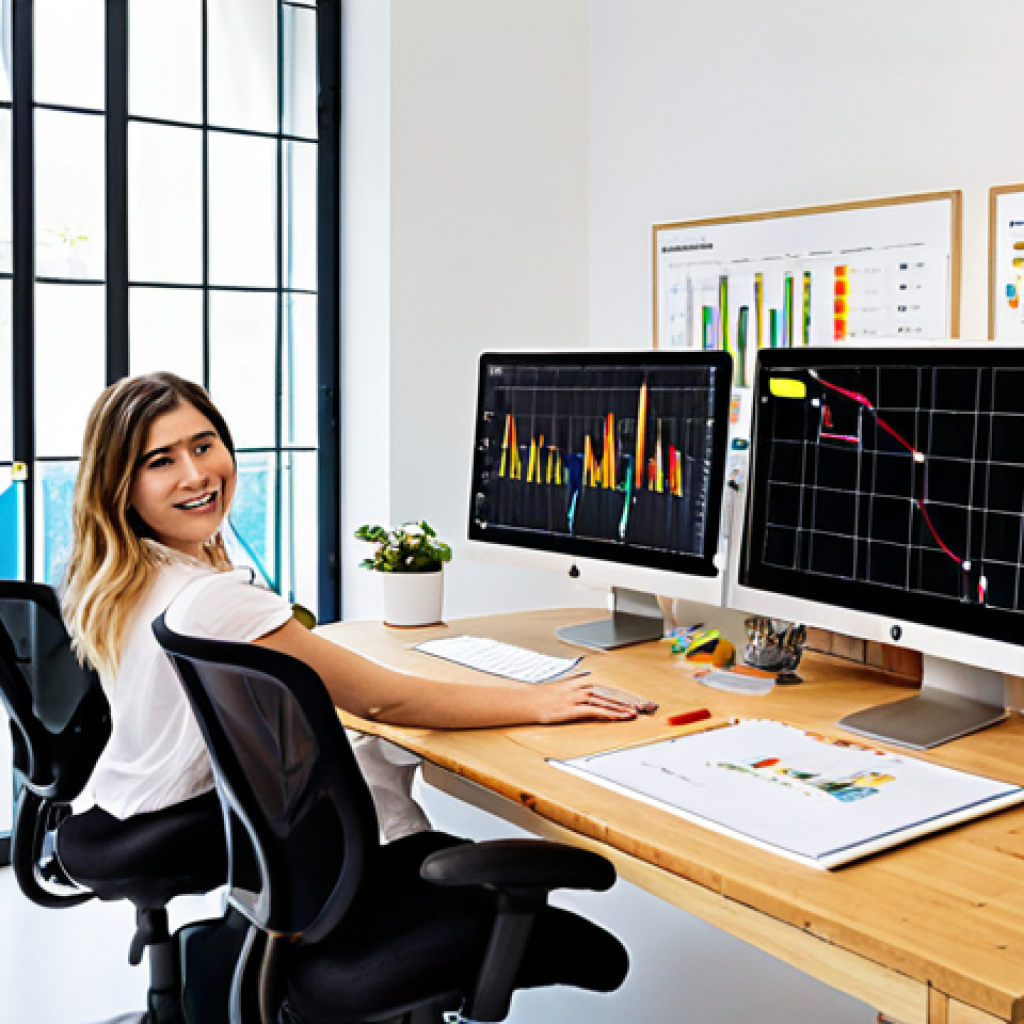Ever felt that pang of guilt tossing yet another piece of single-use plastic into the bin? Me too. That feeling, combined with a growing awareness of the environmental crisis, sparked something in me – a desire to create solutions, not just problems.
I wanted to build a business that not only thrived but also left a positive footprint on the planet. That’s why I’m diving headfirst into the exciting world of eco-design startups.
It’s a challenging space, but the potential to innovate and make a real difference is incredibly motivating. Plus, with consumers increasingly demanding sustainable options, the market is ripe for disruption.
Let’s dive in and explore the details further in the following article!
Turning Passion into Profit: Validating Your Eco-Design Idea

Is there a market for your green vision?
Okay, so you’ve got a burning desire to create eco-friendly products. Awesome! But before you max out your credit cards on sustainable bamboo straws, it’s crucial to validate your idea. Does your target audience actually want what you’re offering? Will they pay for it? Don’t rely on assumptions. I learned this the hard way with my first venture (a biodegradable dog toy that, turns out, most dogs found incredibly unappetizing). Market research is your friend. Conduct surveys, analyze competitor products, and, most importantly, talk to potential customers. Get real feedback on your concept, pricing, and features. Are people nodding enthusiastically or politely backing away? That will tell you everything.
DIY Market Research: Getting Down and Dirty
Forget fancy consultants (at least for now). Roll up your sleeves and dive into some DIY market research. Tools like Google Trends can show you search volume for relevant keywords, indicating interest in your niche. Check out online forums and social media groups where your target audience hangs out. What are they complaining about? What are they craving? This is goldmine for product development. I once gleaned a brilliant idea for a reusable coffee filter from a disgruntled comment on a coffee aficionado forum – saved me months of brainstorming!
Sourcing Sustainably: Finding the Right Materials and Partners
The Ethical Dilemma: Walking the Talk
You’re building an eco-design startup, so sustainability isn’t just a marketing buzzword – it’s your core value. That means choosing materials and manufacturing processes that minimize environmental impact. But navigating the world of sustainable sourcing can be tricky. Certifications like Fair Trade, GOTS (Global Organic Textile Standard), and FSC (Forest Stewardship Council) can help you identify ethically produced materials. However, don’t rely solely on labels. Dig deeper. Trace your supply chain to ensure transparency and fair labor practices. It’s a lot of work, but your customers (and the planet) will thank you.
Building Relationships: The Power of Collaboration
Finding reliable and ethical suppliers is crucial, but it’s just the first step. Building strong relationships with your partners is where the magic happens. Communicate your values clearly, visit their facilities (if possible), and treat them like valued members of your team. This fosters trust and collaboration, which can lead to innovative solutions and more sustainable practices throughout your supply chain. I partnered with a small, family-run textile mill in North Carolina, and their expertise in natural dyes completely transformed my product line. It was a game changer!
Don’t Be Afraid to Innovate
Sometimes the perfect sustainable material doesn’t exist yet. That’s where innovation comes in! Explore cutting-edge technologies and unconventional materials. Think mushroom packaging, algae-based plastics, or recycled ocean plastic. Partner with researchers and scientists to develop new solutions. Sure, it’s risky, but the potential rewards are huge – not just for your business, but for the planet.
Crafting a Compelling Brand Story: Authenticity Sells
Beyond Greenwashing: Showing, Not Just Telling
In today’s market, consumers are savvy and skeptical. They can spot greenwashing a mile away. So, don’t just slap a “eco-friendly” label on your product and call it a day. You need to tell a compelling story that resonates with your target audience. Share your journey, your values, and the impact you’re making. Be transparent about your sourcing, manufacturing, and even your challenges. Authenticity is key. People connect with brands that are honest, relatable, and genuinely committed to sustainability. One brand I admire, Patagonia, does this incredibly well. They openly share their environmental initiatives and even admit when they fall short – that level of transparency builds incredible trust.
Visual Storytelling: Capturing Hearts and Minds
Your brand story isn’t just about words. It’s about visuals. Invest in high-quality photography and videography that showcases your products in a beautiful and authentic way. Highlight the natural materials, the craftsmanship, and the sustainable practices. Use imagery that evokes emotions and connects with your target audience’s values. Think lush landscapes, smiling artisans, and happy customers enjoying your products. A picture is worth a thousand words, and a well-crafted visual story can be incredibly powerful.
Navigating the Legal Landscape: Certifications and Compliance
Green Claims: Walking the Line Carefully
When marketing your eco-design startup, it’s crucial to be accurate and truthful about your environmental claims. Avoid vague or misleading statements like “eco-friendly” or “sustainable” without providing specific evidence. Be prepared to back up your claims with certifications, data, and third-party verification. The Federal Trade Commission (FTC) provides guidelines on making green claims, so be sure to familiarize yourself with their regulations. Misleading consumers can lead to legal trouble and damage your brand reputation.
Intellectual Property: Protecting Your Innovations
If you’ve developed a unique eco-design or process, consider protecting it with a patent or trademark. This can prevent competitors from copying your innovations and give you a competitive advantage. Consult with an intellectual property attorney to determine the best course of action for your specific situation. Protecting your intellectual property can be a significant investment, but it can pay off handsomely in the long run.
Building an Online Presence: E-commerce and Beyond
Setting Up Shop: Choosing the Right Platform
In today’s digital age, having a strong online presence is essential for any startup. Choose an e-commerce platform that is user-friendly, customizable, and optimized for mobile devices. Platforms like Shopify, Etsy, and WooCommerce are popular choices, but research your options carefully to find the best fit for your needs and budget. Consider factors like payment processing fees, shipping integrations, and marketing tools.
SEO for Sustainability: Getting Found Online
Once you have your online store set up, it’s time to focus on search engine optimization (SEO). This involves optimizing your website and content to rank higher in search engine results pages (SERPs) for relevant keywords. Conduct keyword research to identify the terms that your target audience is using to search for eco-friendly products. Incorporate these keywords into your website copy, product descriptions, and blog posts. Build high-quality backlinks from other websites in your industry to improve your website’s authority. SEO is a long-term game, but it’s essential for driving organic traffic to your online store.
Keyword Research Tools
- Semrush
- Ahrefs
- Google Keyword Planner
Funding Your Dream: Grants, Investors, and Crowdfunding
Seeking External Investment: Angels and Venture Capitalists
Depending on the scale of your ambitions, you might need to seek external investment to fuel your growth. Angel investors and venture capitalists (VCs) are always on the lookout for promising startups with innovative ideas and strong teams. However, securing funding from investors can be a competitive process. You’ll need to have a well-developed business plan, a compelling pitch deck, and a strong understanding of your financials. Be prepared to answer tough questions about your business model, your target market, and your competitive landscape. And remember, investors aren’t just investing in your idea – they’re investing in you and your team.
Crowdfunding: Engaging Your Community
Crowdfunding can be a great way to raise capital and build awareness for your eco-design startup. Platforms like Kickstarter and Indiegogo allow you to solicit small donations from a large number of people in exchange for rewards or equity. Crowdfunding can be a particularly effective strategy for eco-friendly products, as it allows you to tap into a community of environmentally conscious consumers who are eager to support sustainable businesses. However, crowdfunding campaigns require careful planning and execution. You’ll need to create a compelling campaign video, set realistic funding goals, and offer attractive rewards to incentivize backers.
Measuring Impact: Beyond the Bottom Line
Tracking Your Environmental Footprint: Data-Driven Sustainability
As an eco-design startup, it’s not enough to just claim to be sustainable. You need to measure your environmental impact and track your progress over time. This involves collecting data on your energy consumption, water usage, waste generation, and carbon emissions. There are a number of tools and methodologies available to help you measure your environmental footprint, such as life cycle assessments (LCAs) and carbon footprint calculators. By tracking your environmental performance, you can identify areas for improvement and demonstrate your commitment to sustainability to your customers and stakeholders.
Social Impact: Creating Positive Change
Sustainability isn’t just about the environment – it’s also about social impact. Consider how your business can contribute to positive social change, such as creating fair labor practices, supporting local communities, or promoting environmental education. Partner with non-profit organizations or charities that align with your values. Give back to your community by donating a portion of your profits or volunteering your time. By integrating social impact into your business model, you can create a more meaningful and sustainable business that benefits not only the environment but also society as a whole.
| Area | Considerations | Examples |
|---|---|---|
| Materials | Sourcing, lifecycle, impact | Recycled PET, Organic Cotton, Bamboo |
| Manufacturing | Energy use, waste, emissions | Renewable energy powered factories, closed-loop systems |
| Packaging | Materials, recyclability, size | Compostable packaging, minimal packaging |
| Transportation | Distance, mode, efficiency | Local sourcing, optimized logistics |
Wrapping Up
Embarking on the eco-design journey is more than just a business venture; it’s a commitment to a sustainable future. By validating your idea, sourcing responsibly, crafting an authentic brand story, and measuring your impact, you’re not just building a company, you’re contributing to a better world. Remember to stay innovative and adaptable, and never lose sight of your core values. The world needs more businesses that prioritize people and planet alongside profit.
Useful Tips
1. Start small and iterate: Don’t try to launch a perfect product right away. Get your minimum viable product (MVP) out there, gather feedback, and make improvements based on real-world usage.
2. Network, network, network: Attend industry events, join online communities, and connect with other eco-minded entrepreneurs. Collaboration can open doors to new opportunities and partnerships.
3. Embrace transparency: Be honest about your sustainability efforts and challenges. Consumers appreciate authenticity and are more likely to support brands that are open and transparent.
4. Educate your customers: Help your customers understand the value of sustainable products and the impact they have on the environment. Provide information about your sourcing, manufacturing, and end-of-life options.
5. Don’t be afraid to ask for help: Building a business is tough. Don’t hesitate to reach out to mentors, advisors, and other experts for guidance and support.
Key Takeaways
Validating your eco-design idea through market research is crucial before investing heavily.
Ethical and sustainable sourcing should be at the heart of your business.
Authenticity in your brand story builds trust with consumers.
Measuring and tracking your environmental impact is essential for continuous improvement.
Networking and collaboration can lead to valuable partnerships and opportunities.
Frequently Asked Questions (FAQ) 📖
Q: What exactly is meant by “eco-design startup” in this context?
A: Well, when I say “eco-design startup,” I’m talking about a new business venture focused on creating products or services with a strong emphasis on environmental sustainability.
Think companies designing packaging from seaweed, developing energy-efficient home appliances, or even creating clothing from recycled materials. It’s about embedding eco-consciousness into every stage, from sourcing materials to manufacturing and disposal.
The key is minimizing environmental impact while still delivering a product or service that people actually want and need. It’s not just about being “green,” it’s about being smart, innovative, and commercially viable too.
Q: The article mentions consumer demand for sustainable options. Is this really a significant factor, or just a passing trend?
A: From what I’ve seen firsthand, this isn’t just a trend – it’s a fundamental shift in consumer values. I remember helping my sister move recently, and even she, who isn’t usually super eco-conscious, insisted on buying cleaning products with plant-based ingredients and packaging made from recycled materials.
And that’s just one small example! More and more people are actively seeking out sustainable alternatives, willing to pay a bit more for products that align with their values.
They’re educating themselves about the environmental impact of their purchases and holding companies accountable. This growing awareness, coupled with increased media coverage of environmental issues, is fueling real and lasting demand for eco-friendly products and services.
So, yeah, I’d say it’s a pretty significant factor.
Q: What are some of the biggest challenges facing eco-design startups right now?
A: Honestly, there are a few hurdles. Based on some conversations I had with a friend who tried launching a line of organic cotton baby clothes, one major challenge is cost.
Sustainable materials and ethical manufacturing processes often come with a higher price tag, making it difficult to compete with established brands that prioritize cheap production over sustainability.
Another challenge is consumer perception. Some consumers still view “eco-friendly” as synonymous with “inferior quality” or “less stylish.” Overcoming these misconceptions requires startups to invest in marketing and education to demonstrate that sustainable products can be just as good, if not better, than conventional options.
Finally, navigating complex regulations and certifications can be a real headache, especially for small startups with limited resources. But despite these challenges, I’m optimistic.
The increasing demand for sustainable solutions and the growing availability of innovative technologies are creating a fertile ground for eco-design startups to thrive.
📚 References
Wikipedia Encyclopedia
구글 검색 결과
구글 검색 결과
구글 검색 결과
구글 검색 결과
구글 검색 결과

